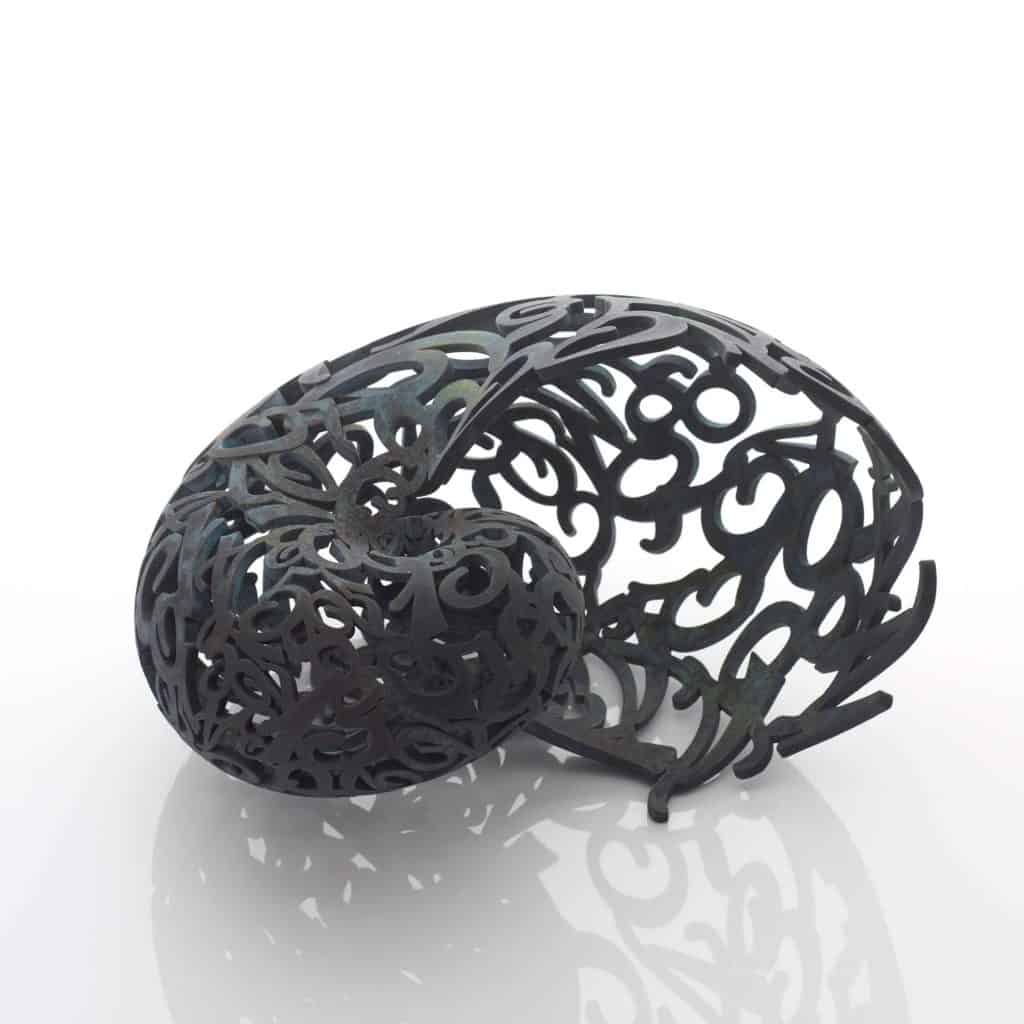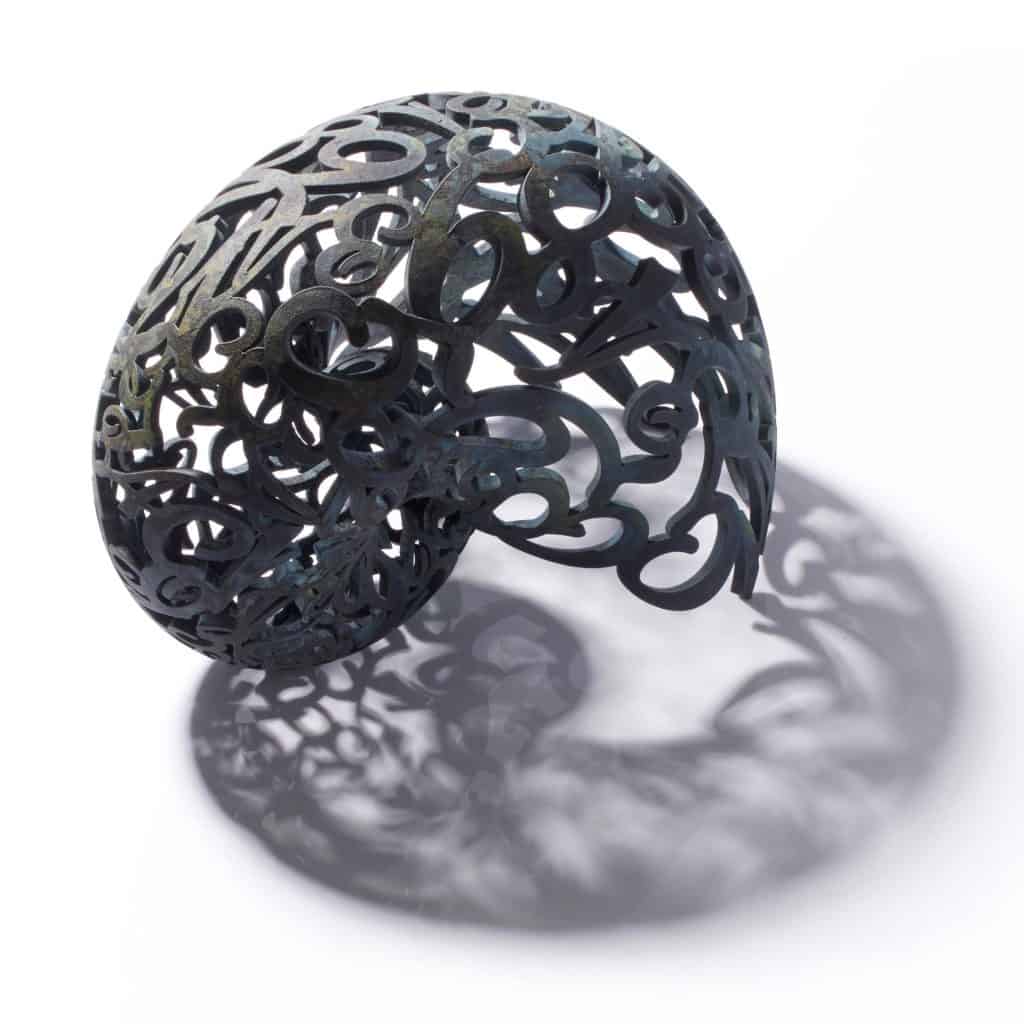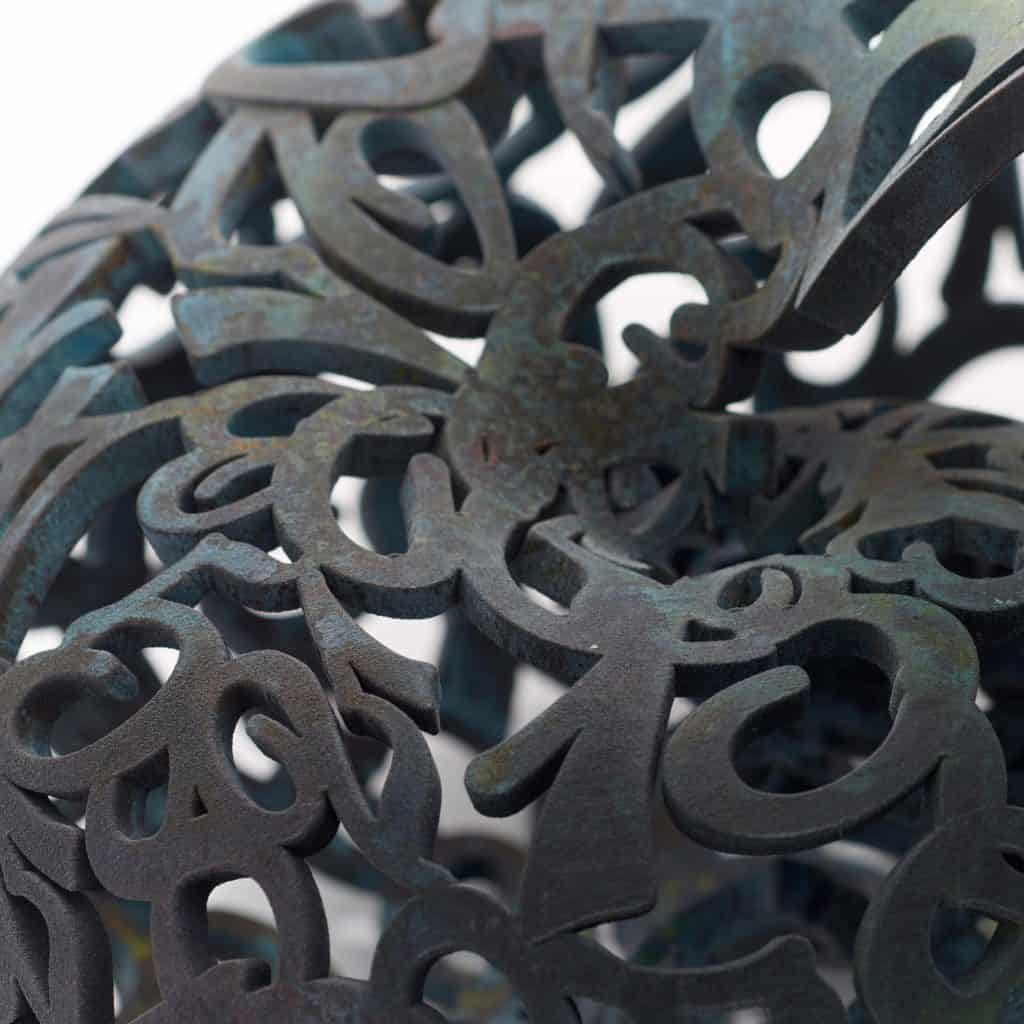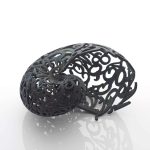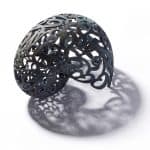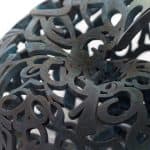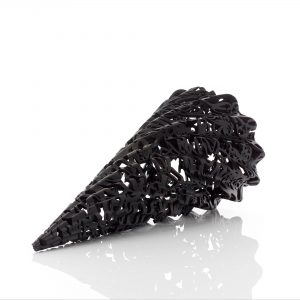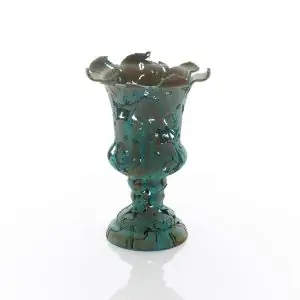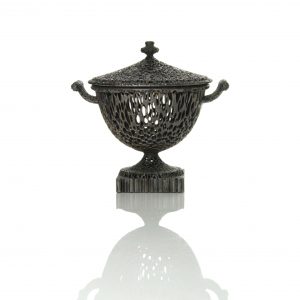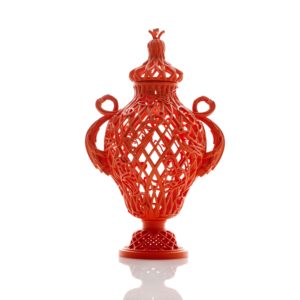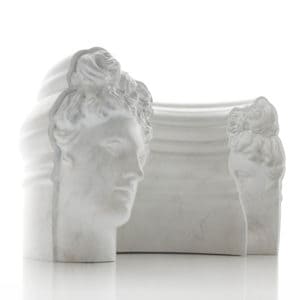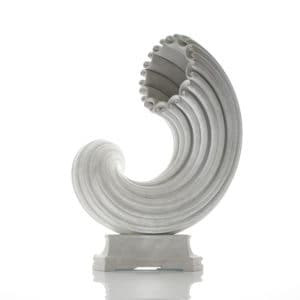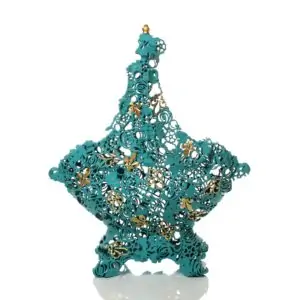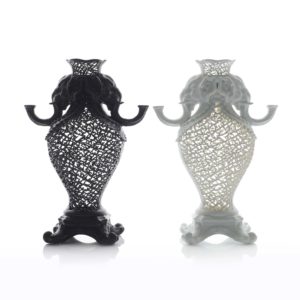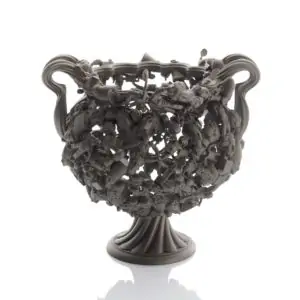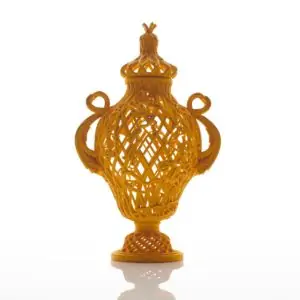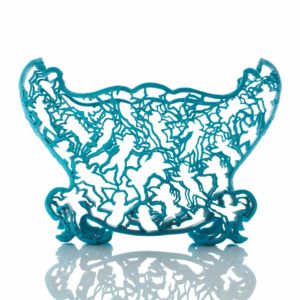More about Nautilus, 2015
'At some stage during the history of mankind it was noticed that objects that are pleasing to the eye conform to certain mathematical proportions. The growth and formation of plants and animals are governed by these principles and when applied to manufactured objects they are usually aesthetically agreeable.
These mathematical principles have become known as the Golden Section and can be simply explained:
A B C

The ratio of the whole line (A – C) to the larger part (A – B) is the same as the larger part (A – B) to the smaller part (B – C), i.e. if A – C = 8, and A – B = 5, the ratio is 1.6
And if A – B = 5 and B – C = 3, the ratio is also 1.6.
The Golden Section has been used to create basic geometries in architecture, the Parthenon being a well known example and in Fine Art, where landscape and portrait painting often conform by the careful placing of key elements.
Named after the Italian mathematician Fibonacci, there is a sequence of numbers that all conform the same principle:
0, 1, 1, 2, 3, 5, 8, 13, 25, 34, 89, 144 etc. If a number in the sequence is divided by the preceding number, the answer comes to 1.62.
This sequence can be used to produce a construction that allows us to describe the Golden Spiral:

The Golden Spiral can be seen in nature, in pinecones, sunflowers, cauliflower florets etc. It is also thought to be seen in the Nautilus shell, though in actual fact, it doesn’t quite conform.
The Nautilus that I created is made up of the numbers in the Fibonacci sequence, arranged in order from the centre. I aimed to create an aesthetically pleasing form that emphasises the relationship between the arts and sciences, brought together through mathematics. The tools I used to make the piece are in themselves a result of the application of mathematics, physics, and material knowledge, borne from a creative urge to find new ways to make complex objects that cannot be achieved by any other method.
Nautilus was designed using Rhino 3D CAD software, then 3D printed in nylon, after which it was metaised in copper and given a patinated surface treatment.'
- Michael Eden

 The ratio of the whole line (A – C) to the larger part (A – B) is the same as the larger part (A – B) to the smaller part (B – C), i.e. if A – C = 8, and A – B = 5, the ratio is 1.6
And if A – B = 5 and B – C = 3, the ratio is also 1.6.
The Golden Section has been used to create basic geometries in architecture, the Parthenon being a well known example and in Fine Art, where landscape and portrait painting often conform by the careful placing of key elements.
Named after the Italian mathematician Fibonacci, there is a sequence of numbers that all conform the same principle:
0, 1, 1, 2, 3, 5, 8, 13, 25, 34, 89, 144 etc. If a number in the sequence is divided by the preceding number, the answer comes to 1.62.
This sequence can be used to produce a construction that allows us to describe the Golden Spiral:
The ratio of the whole line (A – C) to the larger part (A – B) is the same as the larger part (A – B) to the smaller part (B – C), i.e. if A – C = 8, and A – B = 5, the ratio is 1.6
And if A – B = 5 and B – C = 3, the ratio is also 1.6.
The Golden Section has been used to create basic geometries in architecture, the Parthenon being a well known example and in Fine Art, where landscape and portrait painting often conform by the careful placing of key elements.
Named after the Italian mathematician Fibonacci, there is a sequence of numbers that all conform the same principle:
0, 1, 1, 2, 3, 5, 8, 13, 25, 34, 89, 144 etc. If a number in the sequence is divided by the preceding number, the answer comes to 1.62.
This sequence can be used to produce a construction that allows us to describe the Golden Spiral:
 The Golden Spiral can be seen in nature, in pinecones, sunflowers, cauliflower florets etc. It is also thought to be seen in the Nautilus shell, though in actual fact, it doesn’t quite conform.
The Nautilus that I created is made up of the numbers in the Fibonacci sequence, arranged in order from the centre. I aimed to create an aesthetically pleasing form that emphasises the relationship between the arts and sciences, brought together through mathematics. The tools I used to make the piece are in themselves a result of the application of mathematics, physics, and material knowledge, borne from a creative urge to find new ways to make complex objects that cannot be achieved by any other method.
Nautilus was designed using Rhino 3D CAD software, then 3D printed in nylon, after which it was metaised in copper and given a patinated surface treatment.'
- Michael Eden
The Golden Spiral can be seen in nature, in pinecones, sunflowers, cauliflower florets etc. It is also thought to be seen in the Nautilus shell, though in actual fact, it doesn’t quite conform.
The Nautilus that I created is made up of the numbers in the Fibonacci sequence, arranged in order from the centre. I aimed to create an aesthetically pleasing form that emphasises the relationship between the arts and sciences, brought together through mathematics. The tools I used to make the piece are in themselves a result of the application of mathematics, physics, and material knowledge, borne from a creative urge to find new ways to make complex objects that cannot be achieved by any other method.
Nautilus was designed using Rhino 3D CAD software, then 3D printed in nylon, after which it was metaised in copper and given a patinated surface treatment.'
- Michael Eden 
